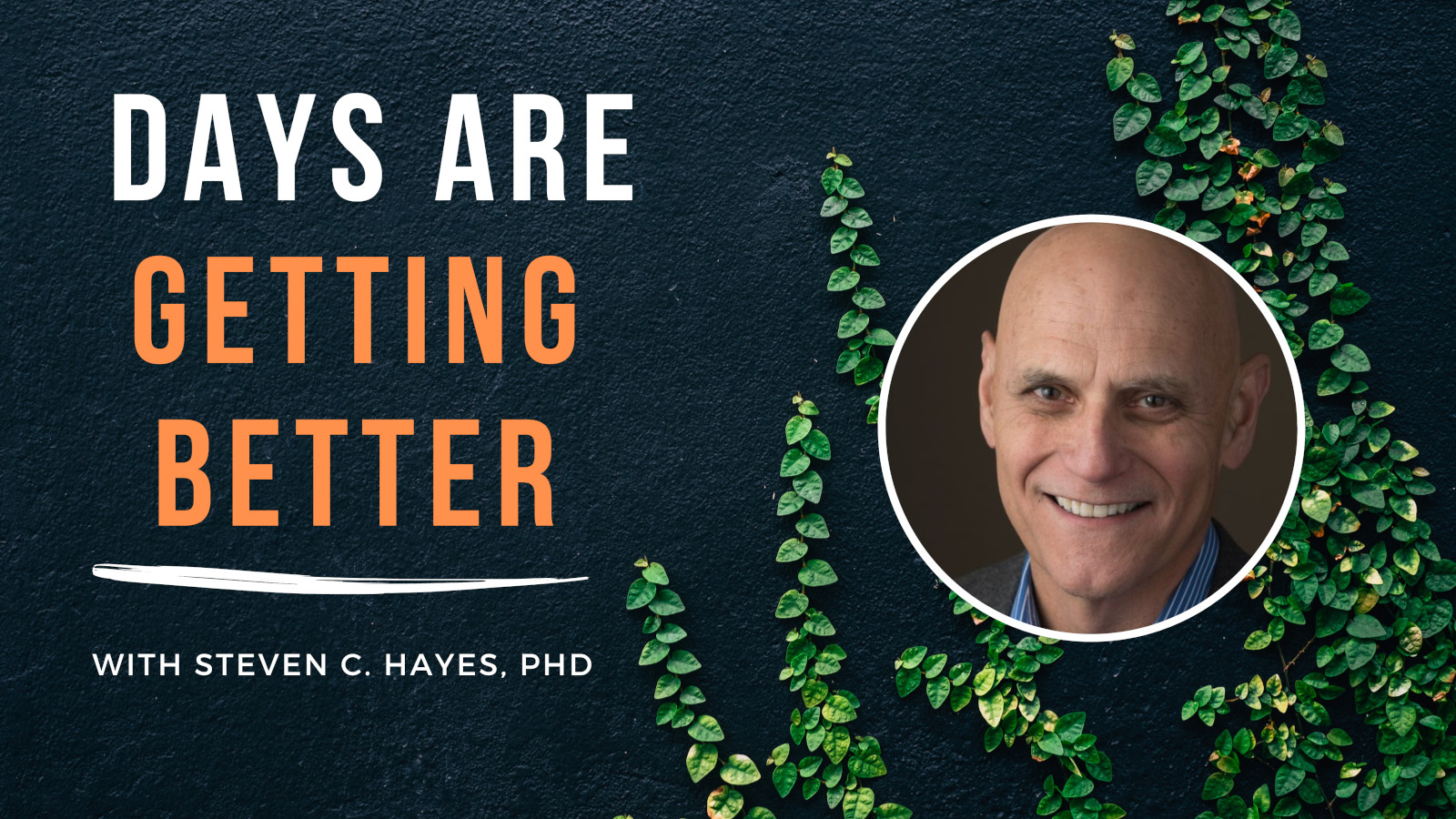There’s a common misunderstanding about Acceptance and Commitment Therapy (ACT): that pursuing a positive mood is somehow a bad idea. I get it—the nuance can be tricky. But the science, and the heart of ACT, tells a more subtle story. It’s not about shunning joy; it’s about chasing happiness wisely, without falling into traps that drain our life energy.
Let’s start with a truth most ACT folks know well: trying to suppress or avoid emotions—especially the tough ones—often backfires. We have got a cutesy aphorism for it: “If you’re not willing to have it, you’ve got it.” This is experiential avoidance, or what we will call here EA Type 1. It’s like trying to push a beach ball underwater; it pops back up, often with a splash.
That is rarely wise.
There are exceptions. First responders on the job need to deliberately dial down emotions to get through the horrors of their day, and then they need to open back up after work. That’s a challenge and not all of them navigate it. For most of us these situations are less common and dodging feelings like sadness or anxiety only tightens their grip. Decades of research, including my own, show that avoidance can erode well-being, fuel anxiety, and even harm health almost everywhere you look.
But here’s where it gets interesting: pursuing positive moods doesn’t have to mean avoiding the negative ones.
Think about it. We savor a delicious meal but not because we’re dodging a disgusting one. We cherish a hug from a loved one but not because we’re running away from embracing a barrel cactus. Seeking joy can be about leaning into what lights us up, not what we are escaping.
Yet, there’s a second trap lurking close by, and it is one ACT has warned about from the start. Now it’s gaining traction in the science but it is still much less common to see it called out. Let’s call it EA Type 2 but in this case “EA” stands for experiential attachment.
This is not totally new. The relevant ACT aphorism has also been there from the beginning: “If you’re not willing to lose it, you’ve lost it.”
What does that mean?
Demanding that life deliver a constant stream of smiles and roses disconnects us from the real purpose of emotions: to guide us in the present, informed by our past. Clinging to positive feelings as if they must never fade is a recipe for misery and fruitless effort. Emotions, like dashboard lights, signal what’s happening. If they were always on, they’d readily lose their meaning. Joy, sadness, love, fear—they all rise and fall, wax and wane. That’s not a flaw—it’s a feature. It’s the rhythm of being human.
I wear a bracelet for big moments—talks, weddings, funerals. It’s a gift from my wife, inscribed with a biblical quote I live by: “This too shall pass.” I wear it as a reminder that every moment is precious, whether it’s joyful or painful. Every moment is a chance to choose love over fear. Clinging to joy with an air of desperation isn’t loving or joyful; it’s a rictus, like the Joker’s grin in Batman. Real happiness comes from noticing, savoring, and letting go—not demanding permanence. As a living, breathing human, I know everything I love will pass. My sweet children, the earth, the stars—they’ll all fade one day. Do I like that? Nope. But I’m not a deity, and pretending otherwise steals the beauty of now.
A new study, led by the brilliant Baljinder Sahdra and recently accepted by the Journal of Happiness Studies (Sahdra et al., in press, 2025), dives into this distinction with fresh clarity. Our team tracked 167 people over weeks, using ecological momentary assessment—basically, pinging folks multiple times a day to capture their emotions and strivings in real time. We looked at two ways of chasing happiness: prioritizing positivity (PP), which is about seeking joyful actions, like spending time with friends or appreciating beauty; and experiential attachment (EA Type 2), the clingy demand to hold onto positive feelings.
Here’s the kicker: when analyzed one person at a time, EA Type 2 consistently dampened happiness over time. It’s like gripping a butterfly so tightly you crush its wings. This effect held even when first factoring in stress, positive events, loneliness, or social connection. But when you averaged everyone together, as traditional studies do, this important pattern largely “washed out.” Why? Because people aren’t cookie-cutter. Some folks thrive by seeking positive actions, while others get tangled in attachment, chasing a happiness that slips away.
We saw that very thing when we focused one at a time on people who prioritized positivity and then tried to find subgroups (what we call by the geeky name of “idionomics“). For one subgroup this boosted happiness over time—think of people choosing to call a friend or savor a sunset. But for another group, it didn’t help directly and it sometimes slid into EA Type 2, dragging happiness down! The difference was in how the participants pursued joy and happiness.
It’s one thing to create and appreciate happy moments. It’s another thing altogether to demand that they stick around forever. The study’s idionomic approach—looking at particular people first and not just group averages—helped us discover why one-size-fits-all happiness advice often fails. It is one more piece of evidence that idionomic analysis is a game-changer for understanding what works for whom.
So, what’s the ACT take?
Seeking and savoring positive emotions is fine—great, even! But not if it’s a vehicle for either type of EA. Running from pain (EA Type 1) or clinging to joy (EA Type 2) both mock the human experience. ACT isn’t anti-happiness—it’s about reining in your mind enough that you can safely pursue happiness without falling into the usual traps.
Do loving things to feel more love. Create beauty to see more beauty. But don’t demand that life give you a steady supply of those moments or else, like some three-year-old demanding candy. Maybe that worked long ago because you were cute. Now it’s tiresome—to you and everyone around you. It’s time to set aside your childish demands and to let life give you some wisdom. Positive emotions are precious because they pass.
This hits home for me. At weddings or births, I cry—not just from joy, but from knowing these moments are fleeting. That’s why we savor them. My bracelet reminds me to show up, and not to clutch or flee. Life is for living, and joy is a vibrant part of it. You can seek it, but learn to let be, and let go.
If you’re nodding along in understanding and basic agreement, try this: catch a happy moment today. Savor it. Then let it pass without grabbing on. Ask yourself, “What’s one small thing I can do to create more happiness in my life?” Maybe it’s a kind word to a friend or a walk in nature. Let in that wisdom and do it.
That’s ACT in action—living fully, not chasing “positive” butterflies in a vain effort to keep them by pinning them to a bulletin board.
Reference:
Sahdra, B. K., Shin, A., Fraser, M., Levin, M. E., Klimczak, K. S., Krafft, J., Hayes, S. C., Hernández, C., & Ciarrochi, J. (in press, 2025). One size does not make all happy: Idionomic links between striving for positive states and happiness in experience sampling. Journal of Happiness Studies.







